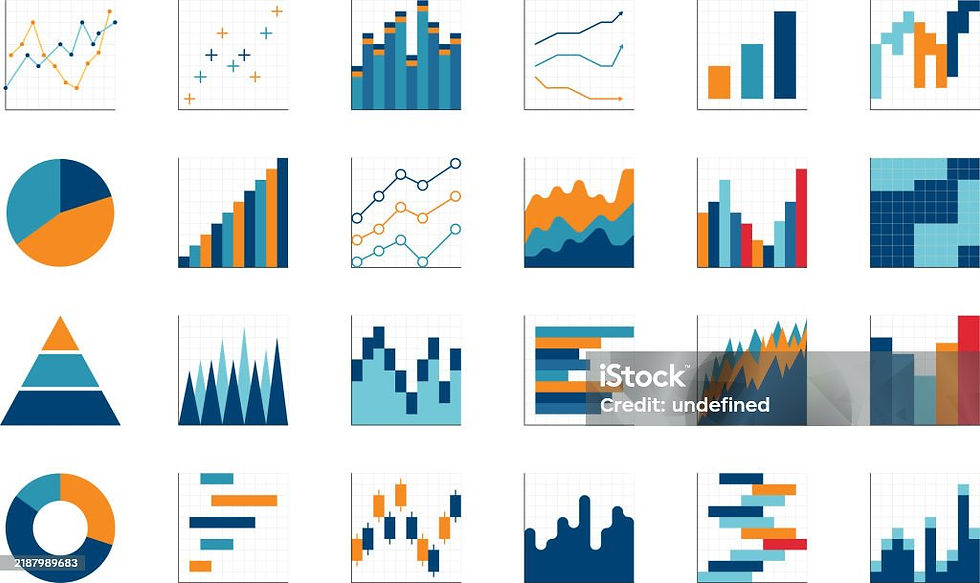How AI Enhances Data Analysis
- kaurba2122
- Oct 3
- 4 min read
In today's digital world, organizations generate more data than ever before. From customer transactions and social media interactions to IoT sensors and healthcare records, the challenge is not collecting data--it's making sense of it. Data has become the new fuel of the digital economy, but raw data alone does not drive growth. The true power lies in analyzing that data to uncover insights and guide smarter decisions. Traditional data analysis works well for smaller datasets, but as the volume, variety, and velocity of data grows, organizations are increasingly turning to Artificial Intelligence(AI) to take data analysis to the next level. This is where AI transforms or enhances traditional data analysis into a smarter, faster, more accurate and more predictive process.

The Limitations of Traditional Data Analysis
Traditional data analysis relies heavily on manual exploration, spreadsheets, and business intelligence (BI) dashboards. While these tools are effective for descriptive insights (like monthly sales or customer demographics), they often:
Struggle to detect complex patterns in large datasets
Take significant time for cleaning and preparation
Depend on human interpretation, which can introduce bias
Focus mostly on what happened, not what will happen
AI changes this paradigm by automating processes, finding hidden insights, and even suggesting next steps.

AI's Role In Data Analytics Life Cycle
The data analytics life cycle is the structured process organizations follow to turn raw data into meaningful insights. Traditionally, it includes six stages:
Data Collection
Data Preparation
Data Analysis/Modeling
Data Visualization
Interpretation & Insights
Decision-Making & Action
Data Collection
Traditional: Data is gathered from databases, surveys, sensors or logs.
AI's Role:
Automates web scraping, sensor integration, and log monitoring.
Uses AI powered APIs to collect unstructured data(images, text, Video, voice).
Example: AI tools automatically gather customer sentiment from social media posts.
Data Preparation (Cleaning & Integration)
Traditional: Manual removal of errors, duplicates and missing values.
AI's Role:
Auto-detects anomalies and fills missing data with smart imputation.
Uses Natural Language Processing (NLP) to process text, chat, logs and emails.
Example: AI cleans healthcare datasets by standardizing patient records across hospitals.
Data Analysis/Modelling
Traditional: Analysts apply statistical methods, regression, or clustering.
AI's Role:
Advanced Pattern Recognition
While traditional analysis identifies obvious correlations, AI detects subtle patterns and relationships hidden in massive datasets by machine learning. For example, AI might reveal that a combination of weather, location, and shopping habits predicts demand for a specific product.
Predictive Analytics
AI models can forecast trends with high accuracy. Businesses can predict sales, healthcare providers can anticipate patient risks, and financial institutions can forecast market movements. Predictive analysis shifts organizations from reactive to proactive decision-making.
Example: Airlines use AI models to predict ticket demand on different routes, adjusting prices dynamically to maximize revenue.
Prescriptive Insights
Going beyond “what will happen,” AI recommends actions. For example:
A retail AI model may suggest optimal inventory levels.
An HR analytics tool may recommend training to reduce employee turnover.
Data Visualization
Traditional: Analysts manually create charts and dashboards.
AI's Role:
AI recommends the best visualization (bar chart, scatter plot, heatmap)
Highlights anomalies and trends automatically.
Example: Power BI's AI assistant suggests graphs and auto generated dashboards.
Interpretation And Insights
Traditional: Analysts explain results in reports.
AI's Role:
Natural Language Generation (NLG) converts numbers into plain- language summaries.
AI chatbots let non technical users query data using everyday questions.
Decision- Making And Action
AI-powered dashboards update continuously, flagging anomalies and opportunities as they happen—critical for industries like finance, logistics, and healthcare.
Traditional: Business leaders decide based on analysts reports.
AI's Role:
Provides prescriptive analytics, recommends best actions (not just insights).
Automates decisions in real time ( e.g., fraud detection systems blocking transactions).
Real-World Applications
Healthcare: AI helps detect diseases earlier by analyzing patient records, genetics, and imaging data.
Finance: Banks use AI to spot fraudulent activity in real time.
Retail: Personalized recommendations powered by AI increase customer satisfaction and sales.
Education: AI-powered analysis tailors learning paths for students based on performance data.
Real World Case Studies
Netflix: Uses AI to analyze viewing history and recommend shows, keeping users engaged and reducing churn.
Amazon: Employs AI for predictive inventory management, ensuring the right products are stocked based on demand forecasts.
Spotify: Uses AI to analyze listening habits and create personalized playlists for millions of users.

The Future of Data Analysis with AI
The integration of AI in data analysis is moving organizations from hindsight to foresight. As AI becomes more advanced, we’ll see analytics evolve into:
Hyper-automation of workflows.
Self-service AI dashboards for all employees.
Context-aware predictions that combine multiple data sources.
AI-augmented decisions where humans and AI collaborate seamlessly.
Conclusion
Data alone doesn’t create value—it’s the insights derived from it that drive better decisions. Traditional methods show us the past, but AI enhances data analysis by revealing hidden patterns, predicting outcomes, and guiding action in real time. AI is not replacing the data analytics life cycle- it's supercharging it. From automating data prep to real time decision making, AI reduces human effort, speeds up analysis and improves accuracy. In Short, AI is turning data analysis from a backward-looking task into a forward-looking strategy that drives faster, smarter and more effective decision-making.


